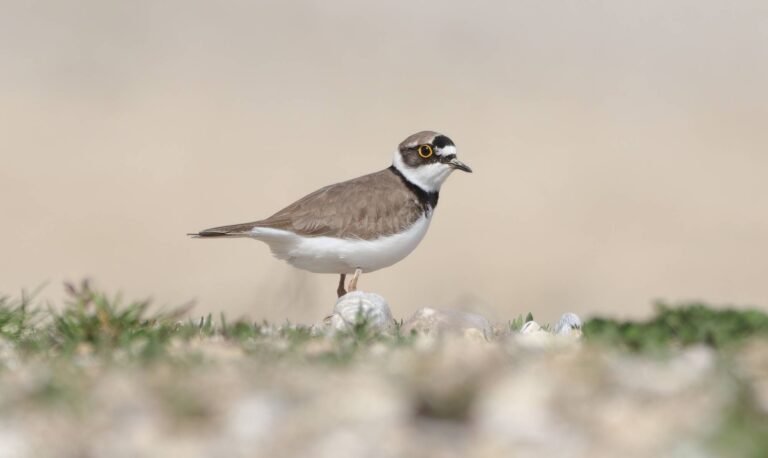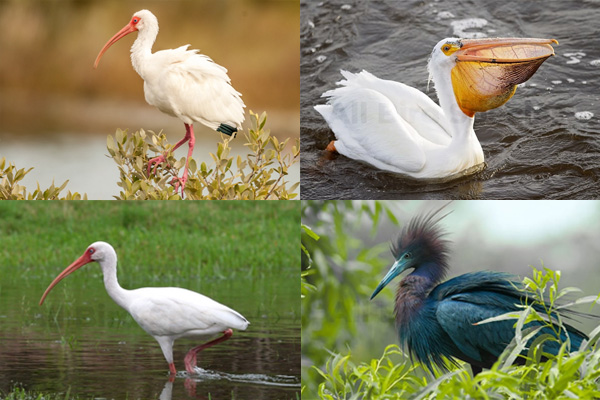White-necked Raven – Corvus albicollis (With Pictures)
Did you know the White-necked Raven, or Corvus albicollis, is as smart as some primates? These birds live in Eastern and Southern Africa. They are not just smart but also look amazing, with a white collar that stands out.
If you’re into bird watching or love African wildlife, you’ll find these birds fascinating. Let’s dive into the beauty and special traits of this incredible species.
Introduction to the White-necked Raven
- Average Length: 52 cm
- Wingspan: 75–86 cm
- Conservation Status: Low concern
- Diet: Omnivores; they eat almost anything, including dead animals
- Habitat: Mountains, gorges, and cliffs
The White-necked Raven, known as Corvus albicollis, is a fascinating bird. It catches our eye with its unique look and plays a big role in culture. Let’s dive into its world to see how it fits into the Corvid family and its place in folklore.
Overview of the Corvus albicollis
Corvus albicollis lives in eastern and southern Africa. It’s known for its white neck and shiny black feathers. This bird is smart, like many corvids, and scientists love to study it. Its smarts help it survive in different places, showing how adaptable and clever corvids are.
Understanding the Corvid Family
Ravens, like the White-necked Raven, are part of a smart and social family. They’re found in many cultures around the world. Stories often make them messengers or symbols of change, connecting us to their world. Exploring these stories helps us see how important Corvus albicollis and its kin are in human culture.
| Aspect | Details |
|---|---|
| Scientific Name | Corvus albicollis |
| Habitat | Eastern and Southern Africa |
| Physical Features | Black plumage with a distinctive white neck |
| Intelligence | Advanced problem-solving and adaptability |
| Cultural Significance | Mythical representations in various cultures |
Identification of the White-necked Raven
Identifying the White-necked Raven means looking closely at its unique features. These traits make it stand out among other corvids. It’s beautiful and easy to spot in the wild because of these distinct characteristics.
Physical Characteristics
The White-necked Raven has shiny black feathers and a white collar around its neck. This white collar is a key way to tell it apart from other birds. Under the sun, its feathers shine with deep blue and purple colors. Its bill is thicker than many other corvids, adding to its strong look.
Size and Weight
The White-necked Raven is about 52 cm tall and has a wingspan of 75 to 86 cm. It’s one of the bigger birds in the Corvid family. Adults weigh around 1.2 kg, which suits their eating habits and how they live in their environment.
Distinguishing Features from Other Corvids
When comparing the White-necked Raven to other corvids, some key differences stand out. Its tail shape and length are quite different from those of common crows. Young White-necked Ravens have browner feathers and don’t have the white-tipped bill of adults. Knowing these differences helps in identifying them in different places.
Related Video:
Distribution and Habitat of the White-necked Raven
The White-necked Raven lives mainly in Eastern and Southern Africa. It’s amazing how it fits into different landscapes. This shows how adaptable it is and what affects where it lives.
Geographic Range in Eastern and Southern Africa
This bird is found in places like South Africa, Kenya, and Uganda. It changes its home a lot, living in:
- Mountainous regions
- Gorges
- Cliffs
These places give it lots of food and safe spots to hide from predators.
Preferred Habitats and Nesting Sites
The White-necked Raven likes places with tall things to nest in. They often nest in:
| Habitat Type | Characteristics | Benefits |
|---|---|---|
| Mountainous Regions | High altitudes with rocky outcrops | Access to diverse food sources and safety from predators |
| Cliffs | Steep and rugged terrains | Protection for nests against weather and threats |
| Gorges | Deep valleys with ample cover | Rich feeding grounds and nesting concealment |
The White-necked Raven uses its environment well to survive. It shows how adaptable it is. These birds are important for the variety of life in Eastern and Southern Africa.
Behavior and Diet of the White-necked Raven
These Crow shows interesting behavior and eat a wide variety of foods. It’s smart and can live in many places. By looking at how it eats, lives with others, and breeds, we see how it succeeds in different environments.
Feeding Habits and Diet Composition
This bird eats almost anything, making it a true omnivore. It eats many things, like:
- Invertebrates
- Fruits
- Carrion
They often look for food on roadsides or in fields. This lets them live in many places. They use their smart eating habits to make the most of what’s available.
Hunting and Foraging Techniques
The White-necked Raven is clever when finding food. They use different ways to hunt, such as:
- Using tools to get food
- Looking for food near fires, where animals might run away
This shows how smart and flexible they are. These skills help them survive and thrive in the wild.
Social Behavior and Breeding
These birds are social and fun to watch. They play together and form groups. When it’s time to breed, they show special behaviors, like:
- Building complex nests
- Taking care of their young
They work together during these important times. Also, This shows how complex their social lives are.
| Dietary Component | Sources | Behavior |
|---|---|---|
| Invertebrates | Ground insects, worms | Active foraging |
| Fruits | Berries, fruits from trees | Scavenging and gathering |
| Carrion | Roadkill, animal remains | Scavenging behavior |
Check Our Previous Articles:
| Woodpeckers in Maryland |
| Hawks in Maryland |
| Woodpeckers in Iowa |
| Hummingbirds in Georgia |
| Owls in Oklahoma |
Conclusion
The White-necked Raven crow is known for its striking looks and smart ways. It plays a big role in its ecosystem. At the end learning about Corvus albicollis, we see how important they are in nature.
Ravens have been important in stories and myths for a long time. They appear in tales from Native American cultures and in literature. Their stories connect us to a deep history that spans many years.







